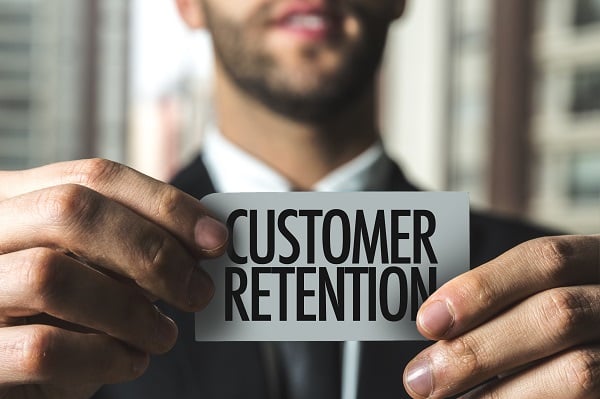Working with a marketing agency can be the most rewarding experience … and the most frustrating. Missed goals, spiralling costs, mutual suspicion: when a client-agency relationship breaks down, both parties suffer – wasting time, money and goodwill. How can businesses get the most from their marketing agency partners, without falling into a rut? Two people who know better than most are The Marketing Centre founder and former director of integrated marketing agency Phoenix, Clare Methven, and Tim Parrack, Regional Director for the South East. We asked Clare and Tim how business owners should keep their agencies on track – and how to spot problems before they become terminal. Their response? A four-step framework for the client-agency relationship: Step 1. Understand how marketing agencies work Step 2. Set a clear brief Step 3. Know what success looks like Step 4. Mix things up, regularly
Step 1. Understand how agencies work
“What most business owners don't realise is an agency will not increase the amount of time the business owner has on their hands”, says Clare. “Many businesses that engage agencies believe their new partner will take a certain type of work off their hands. The bit most businesses don’t realise is that an effective agency requires clear input from the client. Some agencies need an awful lot of managing and hand-holding to get the best out of them, but even the best in the business require a huge amount of insight into their client’s business, which can be time-consuming to manage.” Choosing the right marketing agency can affect the time commitment necessary, says Tim. “Clients have to consider, according to their size and budget, whether they go to a full-service provider or to a specialist team. Full-service agencies do exist, so you've got to work out what you've got time to manage. It does work out more time-consuming managing several niche agencies than a one-stop shop.”
Equally important, it is the client’s responsibility to have some knowledge about their agency’s field of specialism. “Clients can work with visual agencies, design agencies, PR agencies, but because they haven't been in each of those worlds they don't know what they don't know”, says Tim. “As you engage specialist teams, you access more specialist skills, but you've also got to have more specialist skill – because unless you know something about content, how are you going to manage your content agency, for example? If I know a lot about PR and can recognise when my agency is getting woolly, I can disagree with their tactics and speak with strength and direction.”
Step 2. Set a clear brief
Constructive client-agency relationships are built from the first point of contact. At the outset, client and agency should agree on the strategic vision for the relationship and the brief the agency will work to. This will define what success looks like and how it should be measured and reported on. Finally, both parties should have clear expectations for deliverables, payments and methods of contact. Outlining a clear strategy is essential for multiple reasons. Firstly, many agencies are doers as opposed to strategists. While many agencies pitch themselves as strategists, actually they perform best when executing plans set out by their client’s marketing director. Others will be more involved in setting strategy, but it’s important to set clear roles early on. “Secondly, agencies can be very channel-specific, depending on their particular specialism”, says Clare. “They'll only see things in terms of the immediate solution they can offer, rather than what might be best for your business as a whole.” If this is the case, they need to be judged on the performance of their area of specialism, and relevant metrics need to be agreed upon from the outset.Thirdly – and perhaps most cynically – Monday morning meetings at an agency often comprise discussions on which departments are light on work. This can determine what the agency account managers sell to their clients to keep those departments busy – which is nothing to do with whether that's sensible for the business. “Whichever way you look at it, this is not strategic”, Clare admits. “Of course, an agency isn't going to suggest something completely out of line with regards an existing strategy, but nonetheless, there's an element of being partisan about it.” By outlining their business goals and strategy up-front, clients can avoid uncomfortable conversations further down the line.
Step 3. Know what success looks like
Tied to the business’ strategy is their vision of success – essential knowledge for an agency to work effectively and maintain a positive relationship. "When I was an agency owner we would have clients that would provide us with very little guidance”, Tim explains. “We'd have to tease information out of them and then report back. If you hadn't teased enough, what you were working and reporting on wasn't ever quite what they wanted.” The trick is for the client to be clear upfront about what he or she wants from their agency. What's the game plan? What does success look like at the end of the day? At the outset of the new relationship, agree the KPIs used to measure this success and ensure all parties understand why these have been chosen. “An agency should ask how are you going to judge us?” says Tim. “If they don't know how they're going to be measured, then sooner or later they're going to lose the client. I think it's a mistake agencies make and then they wonder why they lose business. It's partly the client's fault and partly the agency's fault.” Once the metrics of success are set, the agency needs to be accountable and report on their activity accordingly. Unfortunately, agencies don’t always follow this rule, preferring to report on data that makes them look good. “If a client can’t understand the reporting offered by their agency, suspicion will follow”, says Clare. “SEO retainers are the classic example – where you receive metrics at the end of the month that contain enough detail to prove that the agency has been very busy, but none of which make sense to the business owner.” Finally, be clear about the nuts and bolts of the relationship. Agree on budgets, timelines, working processes, contract terms and deliverables up front, says Tim. “Agencies should know how often to report KPIs and contact their client, whether daily, monthly or weekly. Client expectations are often very different from agency expectations, so to set that out right at the beginning is seriously important. We had some clients where we walked away very early because the client expected daily contact from us and we expected monthly contact, and the expectations were too different for the price we'd agreed, and so we parted company.” Building a clear, comprehensive brief covering strategy, goals, KPIs and housekeeping is essential. “If the business doesn't give their agency time up front, they will get the pain”, says Clare: “the agency won’t understand their business and won’t do what they want them to do. The owner will inevitably be left asking: what on earth are they doing for me?”
Step 4. Mix things up, regularly
The client’s work doesn’t stop here. It takes ongoing effort to build a positive working relationship between both parties. “Agencies do get lazy”, says Tim. “Like all of us, creative teams suffer from ‘Shiny Things Syndrome’, where something new comes along, and they're attracted to it and lose interest in older accounts. The trick from the client side, and not only in setting expectations and KPI requirements in the beginning, is to keep things fresh and keep the agency on their toes. It sounds hackneyed, but it's true.” “‘Shiny Things Syndrome’ can manifest in an A-team/B-team setup”, says Clare. “When an agency pitches, they often include the agency owner and the senior team. Down the line, smaller businesses’ accounts are often handed over to more junior teams with less experience, structure or strategic insight, which can be frustrating for the client.” This can be avoided by choosing a new supplier. “It’s much better to be a big fish in a reasonably-sized pond. A small business might be better off with a small agency because in doing so, they’re going to get more attention than with a bigger agency where – quite frankly – they will be way down the pecking order. That's just the inevitable reality of it.” Businesses should also be unafraid to mix things up to prevent their agency becoming complacent. “If a business feels it’s not receiving the same level of attention as before, it should consider asking for a different agency team,” says Tim. “Agencies have client managers or similar, and changing things up after things have gone stale is good because it's a new sparkly thing for the client manager and can reset the working relationship. Switching agencies periodically can also freshen things up a bit.” A good agency will recognise when a new direction is needed. “We [Strategy Digital] would proactively change our teams when it looked like things were getting tired. Client managers run out of insight. Different people have different ideas, so you just change the team and this refreshes things”, says Tim. Finally; businesses should do their bit to motivate their agency partners. “Being quick about coming back and signing things off is important”, says Tim. “There’s nothing more frustrating than doing creative work, taking it to a client and asking: what do you think of this? And the client doesn't come back to you for days or weeks. Everything stalls and you lose momentum. Clients should engage with the agency process to get the most from it.”
Finding the balance
An effective client-agency relationship is one of balance. The client keeps their agency on task and on budget; the agency delivers on expectations over the long term. In this way, a good agency will feel like an indispensable part of a business' team. Too often, however, the expectation is that a team will simply hoover up information automatically, somehow absorbing what they need from their client’s business. Actually, the business needs to nail down the brief at the earliest opportunity. This involves thinking strategically about what they want to achieve and how this fits into a wider plan. Most businesses don't think this way as they don't have the time, inclination or vision to do so. In turn, there exists an enormous gap between client and agency. That's where things go wrong. By understanding their agency, taking the time to build a brief and staying engaged and on top of their agency team, client-agency relationships can be long and happy. But remember: strategy comes first. Get that right, and the rest should follow. Clare, Tim and our team of part-time marketing directors work with agencies every day on behalf of ambitious UK businesses. To find out how an experienced, affordable marketing director could benefit your team, click here.




-1.png?width=800&height=500&name=Expert%20View%20(1)-1.png)
